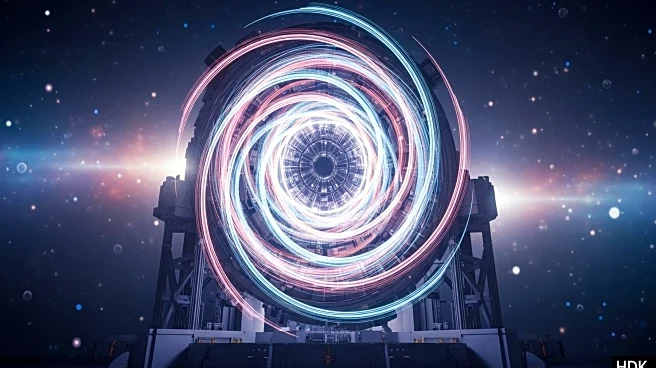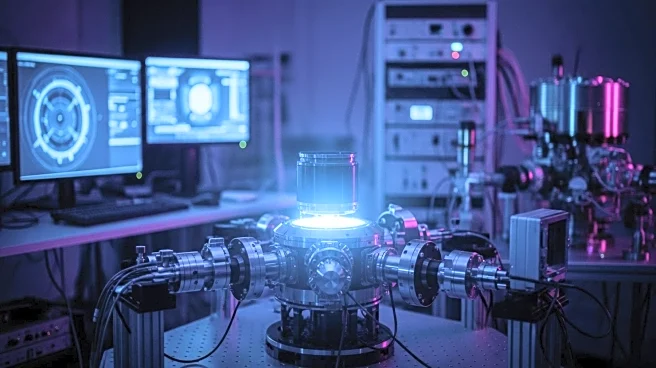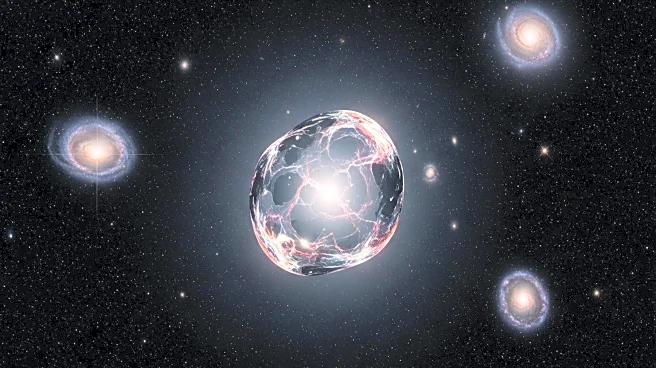What's Happening?
Research facilities known as 'beauty factories' are focusing on the production of B mesons, particles that could provide answers to two major cosmological mysteries: the matter-antimatter asymmetry and the nature of dark matter. B mesons, composed of a beauty antiquark and another quark, are produced by colliding electrons and positrons. These particles are key to understanding why the universe contains more matter than antimatter, as they oscillate between being mesons and antimesons. Additionally, B factories may help identify dark matter particles by isolating the products of electron-positron collisions, potentially revealing new particles that interact with dark matter.
Why It's Important?
Understanding the matter-antimatter asymmetry is crucial for explaining why the universe is not empty, as matter and antimatter annihilate upon contact. B mesons offer a unique opportunity to study this asymmetry and could lead to breakthroughs in particle physics. Furthermore, the search for dark matter, which constitutes a significant portion of the universe's mass, is one of the most pressing challenges in modern physics. B factories provide a platform for testing new theories and could eventually lead to the discovery of dark matter particles, enhancing our understanding of the universe's composition.
Beyond the Headlines
The research conducted at B factories not only advances our knowledge of fundamental physics but also demonstrates the enduring value of experimental data. Facilities like the BaBar experiment continue to yield insights long after their closure, highlighting the importance of data preservation and analysis in scientific progress. This ongoing research also underscores the collaborative nature of scientific inquiry, as physicists worldwide contribute to unraveling these complex mysteries.










